Grand Bunker
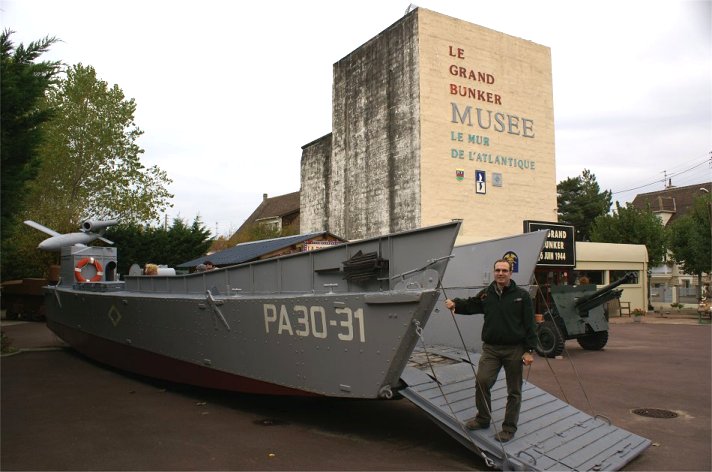
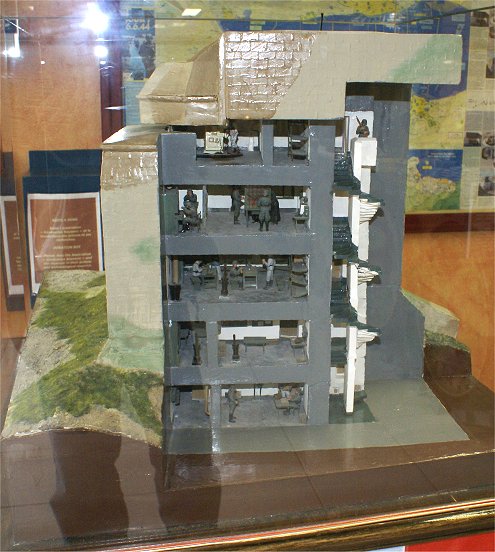
Now a museum, the 52 foot tall, five story German bunker at Ouistreham
was used for rangefinding and coordination of nearby artillery
batteries near the mouth of the Orne. Two officers and fifty men
occupied the facility.


The artist's conception and map help put the Grand Bunker in the
context of the coastal defense, which was to include six 155mm guns along
with trenches and other defenses. The bunker was hidden behind
buildings and came as a surprise to the invading British. The
first ashore were Anglo-French commandos, who captured a bunker at a
demolished the casino in bitter fighting. Bypassing the Grand
Bunker, they contined inland. The guns were found to be removed and replaced by wood.
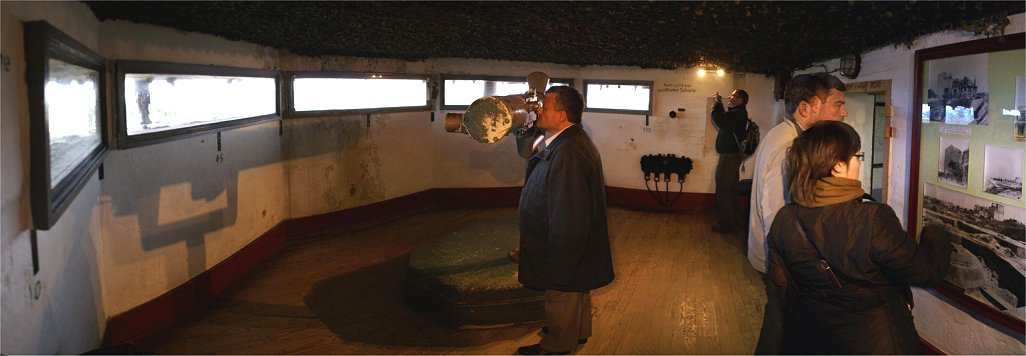
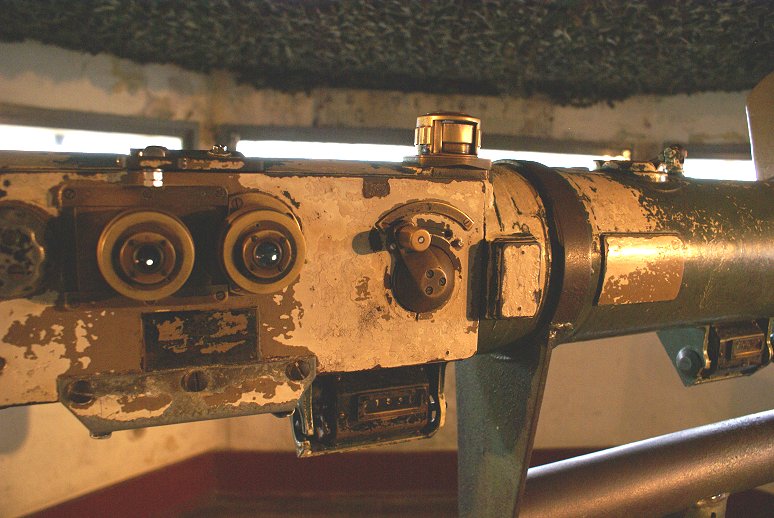
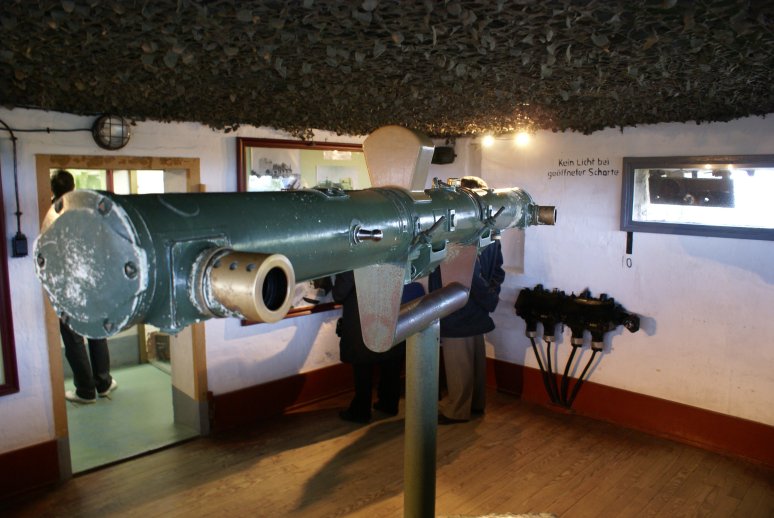
This is the optical rangefinder. Looking through the openings and
turning a knob to match the views from both sides will show you the
range. The rangefinder used here was four meters wide. The
wider the rangefinder, the more accurate the reading.
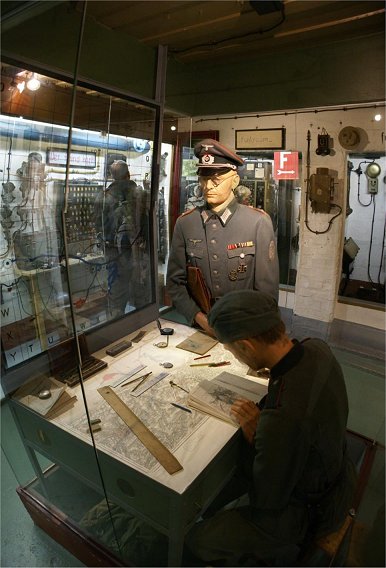
Range data was transmitted to the floor below, where a fire soultion was made and sent to the guns.
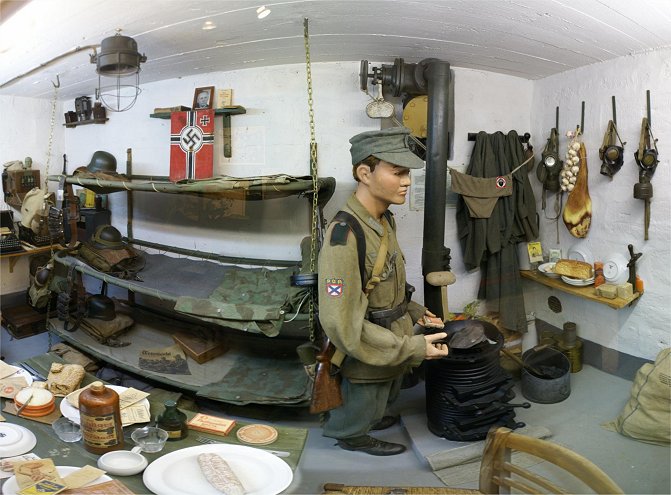
The garrison lived and slept in the bunker.
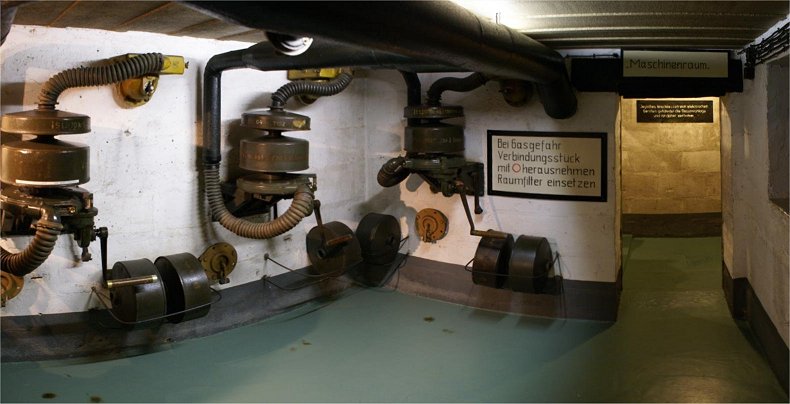
This is ventilation equipment. Except for the rangefinding area,
the rest of the bunker was ventilated and pressurized to keep poison
gas out.
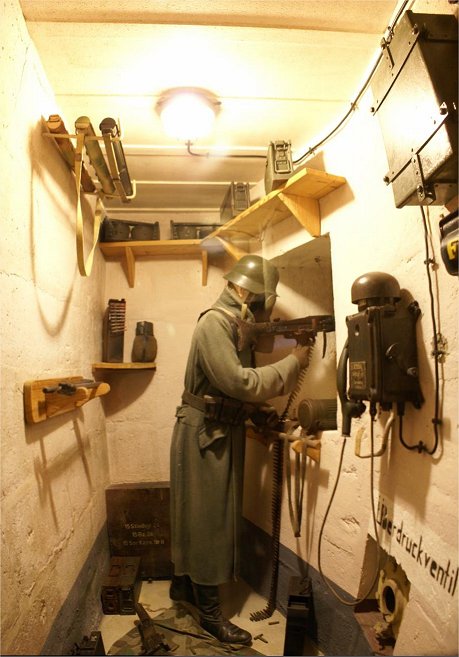
The rangefinding equipment was destroyed during the initial
bombardment, but that morning after the landings, infantry assaults
against the bunker were repulsed by small arms fire and grenades thrown
from the roof. The bunker continued to assist directing German
fire by radio, forcing the British to make follow-on landings further
west.
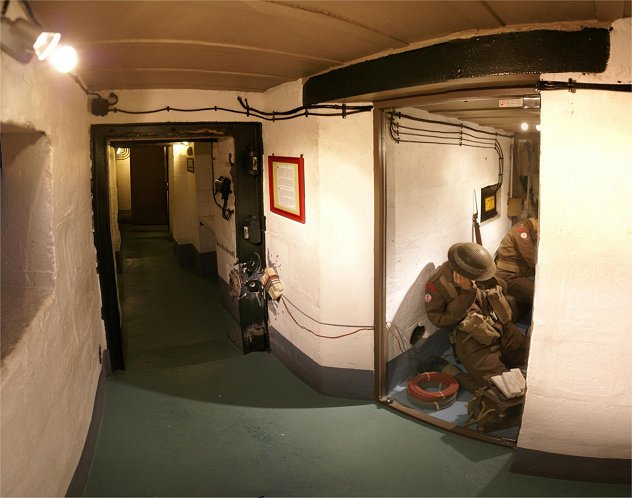
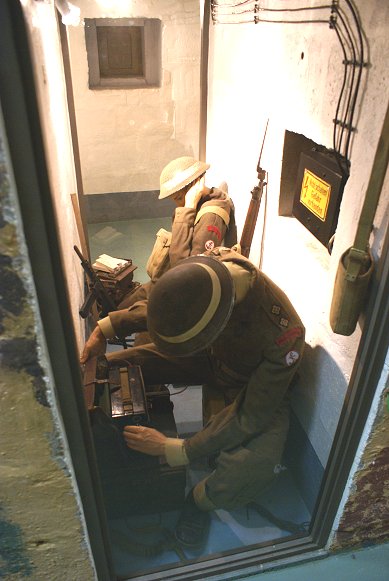
At around 10pm on June 9th, however, Lt. Bob Orrell of the Royal
Engineers and three of his men approached the bunker's door. The
Germans could have easily opened a loophole and killed the men, but
they didn't. The Brits blew the door, and as soon as Orrell
entered the bunker, the whole garrison surrendered. Happy that
their war was over, the Germans were celebrating with alcohol.
Copyright 2010, John Hamill












